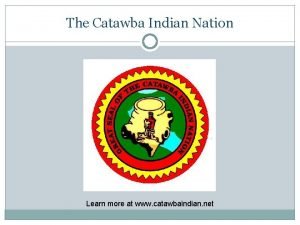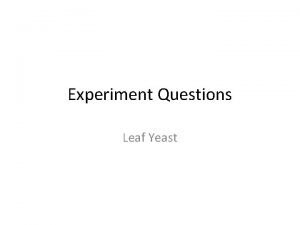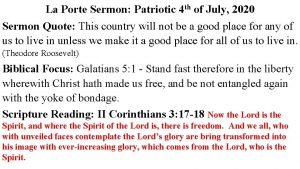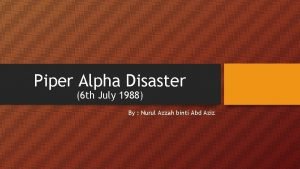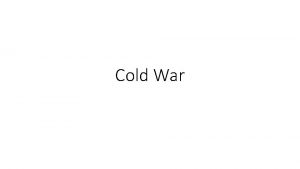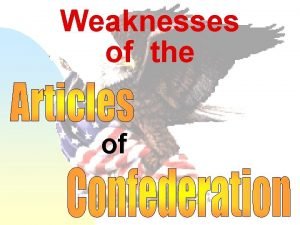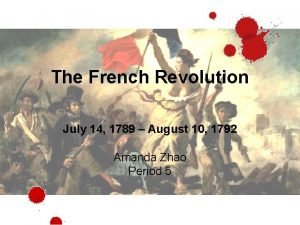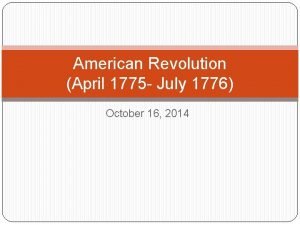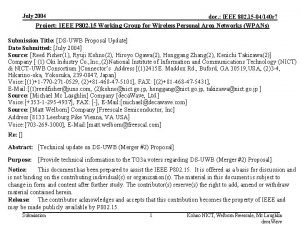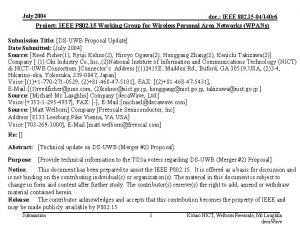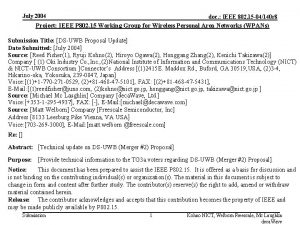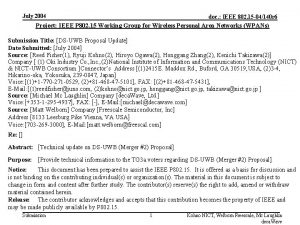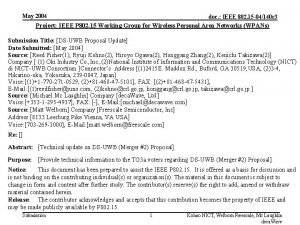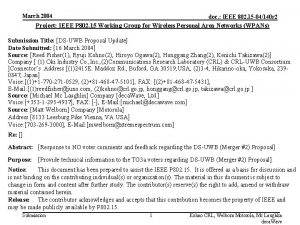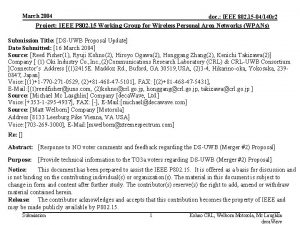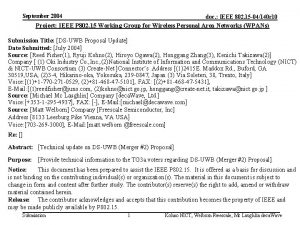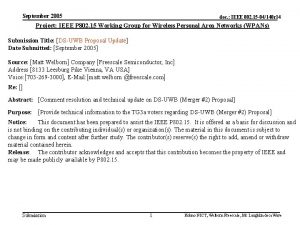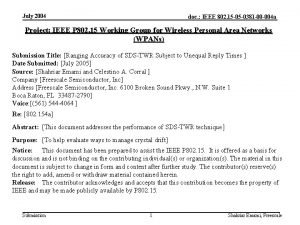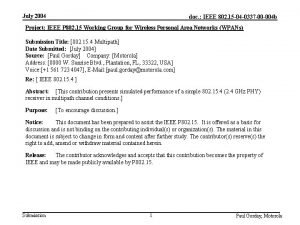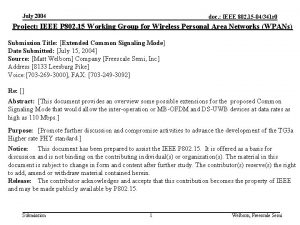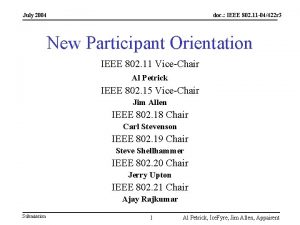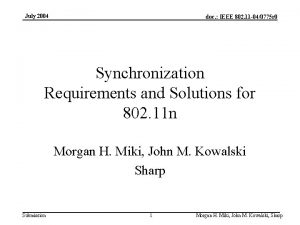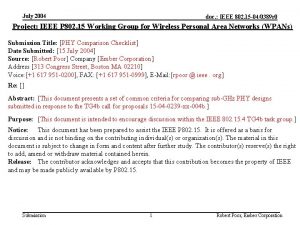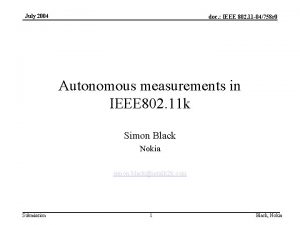July 2004 doc IEEE 802 15 04140 r





































- Slides: 37

July 2004 doc. : IEEE 802. 15 -04/140 r 5 Project: IEEE P 802. 15 Working Group for Wireless Personal Area Networks (WPANs) Submission Title: [DS-UWB Proposal Update] Date Submitted: [July 2004] Source: [Reed Fisher(1), Ryuji Kohno(2), Hiroyo Ogawa(2), Honggang Zhang(2), Kenichi Takizawa(2)] Company [ (1) Oki Industry Co. , Inc. , (2)National Institute of Information and Communications Technology (NICT) & NICT-UWB Consortium ]Connector’s Address [(1)2415 E. Maddox Rd. , Buford, GA 30519, USA, (2)3 -4, Hikarino-oka, Yokosuka, 239 -0847, Japan] Voice: [(1)+1 -770 -271 -0529, (2)+81 -468 -47 -5101], FAX: [(2)+81 -468 -47 -5431], E-Mail: [(1)reedfisher@juno. com, (2)kohno@nict. go. jp, honggang@nict. go. jp, takizawa@nict. go. jp ] Source: [Michael Mc Laughlin] Company [deca. Wave, Ltd. ] Voice: [+353 -1 -295 -4937], FAX: [-], E-Mail: [michael@decawave. com] Source: [Matt Welborn] Company [Freescale Semiconductor, Inc] Address [8133 Leesburg Pike Vienna, VA USA] Voice: [703 -269 -3000], E-Mail: [matt. welborn@freescal. com] Re: [] Abstract: [Technical update on DS-UWB (Merger #2) Proposal] Purpose: [Provide technical information to the TG 3 a voters regarding DS-UWB (Merger #2) Proposal] Notice: This document has been prepared to assist the IEEE P 802. 15. It is offered as a basis for discussion and is not binding on the contributing individual(s) or organization(s). The material in this document is subject to change in form and content after further study. The contributor(s) reserve(s) the right to add, amend or withdraw material contained herein. Release: The contributor acknowledges and accepts that this contribution becomes the property of IEEE and may be made publicly available by P 802. 15. Submission 1 Kohno NICT, Welborn Freescale, Mc Laughlin deca. Wave

July 2004 doc. : IEEE 802. 15 -04/140 r 5 Outline • Merger #2 Proposal Overview – DS-UWB + Common Signaling Mode (CSM) + MB-OFDM • Complexity/Scalability of UWB implementations • Spectral control options for DS-UWB • Performance Submission 2 Kohno NICT, Welborn Freescale, Mc Laughlin deca. Wave

July 2004 doc. : IEEE 802. 15 -04/140 r 5 Overview of DS-UWB Proposal • Merged Proposal #2 has a fundamental goal of DSUWB and MB-OFDM harmonization & interoperability through a Common Signaling Mode (CSM) – High rate modes using either DS-UWB or MB-OFDM • Best characteristics of both approaches with most flexibility • A piconet could have a pair of DS and a pair of MB devices – CSM waveform provides control & interoperation between DS-UWB and MB-OFDM • All devices work through an 802. 15. 3 MAC – User/device only sees common MAC interface – Hides the actual PHY waveform in use Submission 3 Kohno NICT, Welborn Freescale, Mc Laughlin deca. Wave

July 2004 doc. : IEEE 802. 15 -04/140 r 5 The Common Signaling Mode: What Is The Goal? • The common signaling mode (CSM) allows the 802. 15. 3 MAC to arbitrate between multiple UWB PHYs – It is an “etiquette” to manage peaceful coexistence between the different UWB PHYs – Multiple UWB PHYs will exist in the world • DS-UWB & MB-OFDM are first examples – CSM improves the case for international regulatory approval • Common control mechanism for a multitude of applications • Planned cooperation (i. e. CSM) gives far better Qo. S and throughput than allowing un-coordinated operation and interference – CSM provides flexibility/extensibility within the IEEE standard • Allows future growth & scalability • Provides options to meet diverse application needs • Enables interoperability and controls interference Submission 4 Kohno NICT, Welborn Freescale, Mc Laughlin deca. Wave

July 2004 doc. : IEEE 802. 15 -04/140 r 5 What Does CSM Look Like? One of the MB-OFDM bands! Proposed Common Signaling Mode Band (500+ MHz bandwidth) 9 -cycles per BPSK “chip” DS-UWB Low Band Pulse Shape (RRC) 3 -cycles per BPSK “chip” 3978 3100 Submission MB-OFDM (3 -band) Theoretical Spectrum 5 5100 Frequency (MHz) Kohno NICT, Welborn Freescale, Mc Laughlin deca. Wave

July 2004 doc. : IEEE 802. 15 -04/140 r 5 CSM Specifics • We have designed a specific waveform for the CSM – – – BPSK modulation for simple and reliable performance Length 24 spreading codes using 442 MHz chip rate Harmonically related center frequency of 3978 MHz Rate ½ convolutional code with k=6 Provides 9. 2 Mbps throughput • Extendable up to 110 Mbps using variable code and FEC rates • 802. 15. 3 MAC works great with CSM – CSM can be used for control and beaconing – Negligible impact on piconet throughput (beacons are <1%) • Requires negligible additional cost/complexity for either radio – MB-OFDM already has a DS mode that is used for synchronization • This proposal is based on both MB-OFDM and DS-UWB operating with a 26 MHz cell-phone crystal – Very low cost yet terrific phase-noise and accuracy (see GSM spec) Submission 6 Kohno NICT, Welborn Freescale, Mc Laughlin deca. Wave

July 2004 doc. : IEEE 802. 15 -04/140 r 5 Overview of DS-UWB Proposal • DS-UWB proposed as a radio for handheld with – low-cost, – ultra high-rate, – ultra low-power, • BPSK modulation using variable length spreading codes – Scales to 1+ Gbps with low power - essential for mobile & handheld applications • Much lower complexity and power consumption Submission 7 Kohno NICT, Welborn Freescale, Mc Laughlin deca. Wave

July 2004 doc. : IEEE 802. 15 -04/140 r 5 Overview of DS-UWB Proposal • Two wide 50%-bandwidth contiguous bands • Each captures unique propagation benefits of • Bandwidth and Center Frequency Programma 3 4 5 6 7 8 9 1011 GHz • Low band provides long wavelet • High band provides short wavelet • Wavelet = 3 cycles, packed back-to-back 1 1 • Wavelets are modulated with BPSK or QPSK … … • Symbol is made with an N-chip code sequen • Code is ternary (+1, 0, -1) -1 -1 N-chips • Result is Not-spiky in either Time or Frequency volts time Submission 8 Kohno NICT, Welborn Freescale, Mc Laughlin deca. Wave

July 2004 doc. : IEEE 802. 15 -04/140 r 5 DS-UWB Signal Generation Input Data Scrambler K=6 FEC Encoder Conv. Bit Interleaver K=4 FEC Encoder Gray or Natural mapping Bit-to-Code Mapping Pulse Shaping 4 -BOK Mapper Static Center Frequency Transmitter blocks required to support optional modes • Data scrambler using 15 -bit LFSR (same as 802. 15. 3) • Constraint-length k=6 convolutional code • K=4 encoder can be used for lower complexity at high rates or to support iterative decoding for enhanced performance (e. g. CIDD) • Convolutional bit interleaver protects against burst errors • Variable length codes provide scalable data rates using BPSK • Support for optional 4 -BOK modes with little added complexity Submission 9 Kohno NICT, Welborn Freescale, Mc Laughlin deca. Wave

July 2004 doc. : IEEE 802. 15 -04/140 r 5 Data Rates Supported by DS-UWB Data Rate FEC Rate Code Length Range (AWGN) 28 Mbps ½ 24 29 m 55 Mbps ½ 12 23 m 110 Mbps ½ 6 18. 3 m 220 Mbps ½ 3 13 m 500 Mbps ¾ 2 7. 3 m 660 Mbps 1 2 4. 1 m 1000 Mbps ¾ 1 5. 1 m 1320 Mbps 1 1 2. 9 m Similar Modes defined for high band Submission 10 Kohno NICT, Welborn Freescale, Mc Laughlin deca. Wave

July 2004 doc. : IEEE 802. 15 -04/140 r 5 DS-UWB Architecture Is Highly Scaleable 1 to 3 bits ADC Resolution Pre-Select Filter LPF GA/ VGA LNA LPF Cos Sin GA/ VGA Agile Clock 1 -16 Rake Fingers (or more) Variable Equalizer Span ADC at Chip Rate Rake DFE Variable Rate FEC (or no FEC) De-interleave & FEC Decode Synch/ Track Logic • DS-UWB provides low & scalable receiver complexity – ADC can range from 3 bits to 1 bit for super-low power implementation – Rake pipeline & DFE can be optimized to trade off power & cost in multipath • 16 fingers @ 220, 5 fingers @ 500, 2 fingers @ 1326 Mbps • Time duration of DFE scales (shrinks) at shorter range – higher rates. – FEC can scale w/data rate (k=6 & k=4) or be turned-off for ultra low power – DFE effectiveness and simplicity proven in shipping chips – 3% of area Submission 11 Kohno NICT, Welborn Freescale, Mc Laughlin deca. Wave

July 2004 doc. : IEEE 802. 15 -04/140 r 5 UWB System Complexity & Power Consumption • Two primary factors drive complexity & power consumption – Processing needed to compensate for multipath channel – Modulation requirements (e. g. low-order versus high-order) • DS-UWB designed to operate with simple BPSK modulation for all rates – Receiver functions operate at the symbol rate – Optional 4 -BOK has same complexity and BER performance • MB-OFDM operates at fixed 640 Mbps (raw) – Designed to operate at high rate, then use carrier diversity (redundancy) and/or strong FEC to combat multipath fading – Diversity not used above 200 Mbps Submission 12 Kohno NICT, Welborn Freescale, Mc Laughlin deca. Wave

July 2004 doc. : IEEE 802. 15 -04/140 r 5 Fundamental Design Approach Differences • Signal bandwidth leads to different operating regimes – DS-UWB uses 1. 326 GHz bandwidth – MB-OFDM data BW is 412. 5 MHz (100 tones x 4. 125 MHz/tone) • Modulation bandwidth induces different fading statistics – DS-UWB (single carrier UWB) results in frequency-selective fading with relatively low power fluctuation (variance) – MB-OFDM (multi-carrier) creates a bank of parallel channels that experience flat fading with a Rayleigh distribution (deep fades) • Motivations for different choices – Different energy capture mechanism (rake vs. FFT) – Different ISI compensation (time vs. frequency domain EQ) • These fundamental differences affect both complexity & flexibility – Significant impact on implementation, especially at high rates Submission 13 Kohno NICT, Welborn Freescale, Mc Laughlin deca. Wave

July 2004 doc. : IEEE 802. 15 -04/140 r 5 Analog Complexity MB-OFDM Analog Components DS-UWB Analog Components Similar characteristics -Antenna -Pre-select filter -LNA Different characteristics -Switchable UNII filter -Hopping Frequency Gen -Band filter to reject adjacent channels -Static UNII filter -Static Frequency Gen -Band filter with no adjacent channels • Equivalent analog components have similar complexity Submission 14 Kohno NICT, Welborn Freescale, Mc Laughlin deca. Wave

July 2004 doc. : IEEE 802. 15 -04/140 r 5 Implications of Switchable UNII Filter (slide copied from Doc 03/141 r 3, p 12) • • MB-OFDM is proposed to use the UNII band for Band Group 2 If the operating BW includes the U-NII band, then interference mitigation strategies have to be included in the receiver design to prevent analog front-end saturation. • Example: Switchable filter architecture. – When no U-NII interference is present, use standard pre-select filter. – When U-NII interference is present, pass the receive signal through a different filter (notch filter) that suppresses the entire U-NII band. · Problems with this approach: - Extra switches more insertion loss in RX/TX chain. - More external components higher BOM cost. - More testing time. Submission 15 Kohno NICT, Welborn Freescale, Mc Laughlin deca. Wave

July 2004 doc. : IEEE 802. 15 -04/140 r 5 Band-Select Filter Complexity DS-UWB Filter Bandwidth of DS-UWB > 1500 MHz Uses single fixed bandwidth – filter provides rejection for OOB noise & RFI MB-OFDM filter complexity depends on requirements to reject adjacent-band signal energy Data tones Guard tones • Depends on whether design is using the guard tones for real data or just PN modulated noise Submission 16 Kohno NICT, Welborn Freescale, Mc Laughlin deca. Wave

July 2004 doc. : IEEE 802. 15 -04/140 r 5 MB-OFDM Band-Select Filter Complexity Tight filter • constraint Filter must reject MAI for SOP If guard tones are used for useful data, band filter must have very steep cut-off – Transition region is very narrow – Only 5 un-modulated tones between bands (~21 MHz) • SOP performance also affected by filter design – rejection of adjacent band MAI for SOP Relaxed • If guard tones not used for data, filter then filter constraint is relaxed constraint Data tones Guard tones Filter response Submission 17 – Transition region is a wider (15 tones ~62 MHz) – Energy in guard band is distorted (not useful) – May not meet FCC UWB requirement for 500 MHz Kohno NICT, Welborn Freescale, Mc Laughlin deca. Wave

July 2004 doc. : IEEE 802. 15 -04/140 r 5 Comparison of DS-UWB to MB-OFDM Digital Baseband Complexity for PHY • Gate count estimates are based on MB-OFDM proposal team methodology detailed in IEEE Document 03/449 r 2 – Gate counts converted to common clock (85. 5 MHz) for comparison • Explicit MB-OFDM gates counts have only been reported by proposers for a 110/200 Mbps implementation – Other estimates of MB-OFDM Viterbi decoder and FFT engine are provided in IEEE Document 03/343 r 0 • Estimates for MB-OFDM 480 Mbps mode complexity are based on scaling of FFT engine, equalizer and Viterbi decoder – MB-OFDM estimates of 480 Mbps power available in 03/268 r 3 – Details available in IEEE Document 04/164 r 0 • Estimates for MB-OFDM 960 Mbps mode details are based on linear scaling of decoder and FFT engine to 960 Mbps – Assumes 6 -bit ADC for 16 -QAM operation • DS-UWB gate estimates are detailed in IEEE Document 03/099 r 4 – Methodology for estimating complexity of 16 -finger rake, equalizer and synchronization blocks are per MB-OFDM methodology Submission 18 Kohno NICT, Welborn Freescale, Mc Laughlin deca. Wave

July 2004 doc. : IEEE 802. 15 -04/140 r 5 DS-UWB & MB-OFDM Digital Baseband Complexity • Component MB-OFDM (Doc 03/268 r 3 or 03/343 r 1) 110 Mbps DS-UWB 16 -Finger Rake 220 Mbps Raw 3 -Bit ADC DS-UWB 32 -Finger Rake 220 Mbps Raw 3 -Bit ADC Matched filter Rake [DS] or FFT [OFDM] 100 K 26 K 45 K Viterbi decoder 108 K 54 K Synchronization 30 K Channel estimation 24 K 30 K Other Miscellaneous including RAM 247 K Equalizer (Freq Domain) 20 K Total gates @ 85. 5 MHz 455 K 184 K 203 K Gate counts are normalized to 85. 5 MHz Clock speeds to allow comparison – Based on methodology presented by MB-OFDM proposal team (03/449 r 3) – Other details of gate count computations in Documents 04/099 and 04/256 r 0 Submission 19 Kohno NICT, Welborn Freescale, Mc Laughlin deca. Wave

July 2004 doc. : IEEE 802. 15 -04/140 r 5 Digital Baseband Complexity Comparison at ~1 Gbps Component MB-OFDM 960 Mbps using 16 -QAM DS-UWB 2 -Finger Rake 1. 326 Gbps 3 -bit ADC width DS-UWB 5 -Finger Rake 1. 326 Gbps 3 -bit ADC width Matched filter [rake] or FFT 225 K 26 K 45 K Viterbi decoder 432 K 0 K* Synchronization 30 K Channel estimation 24 K 30 K Other Miscellaneous including RAM 297 K Equalizer (Freq Domain) 50 K Total gates @ 85. 5 MHz 954 K 160 K 179 K Assumptions: MB-OFDM using 6 -bit ADC, FFT is 2. 25 x & Viterbi is 4 x of low rate. *DS-UWB operating with no FEC at 1. 362 Gbps Submission 20 Kohno NICT, Welborn Freescale, Mc Laughlin deca. Wave

July 2004 doc. : IEEE 802. 15 -04/140 r 5 Optional Improvement for Interference Mitigation (Approach 1): Analog type of SSA- Notch generation by using a simple analog delay line: • Example: Just Two taps delay line p(t) D The output signal x(t) is given by where p(t) is a pulse signal , and d is delayed time by a delay line D. By assuming that coefficients w 0 and w 1 is time- invariant, then its signal in frequency domain is given by w 0 w 1 + x(t) Now, we set w 0=1 and w 1=a (a is in real value), we obtain A notch is generated at a frequency fn where |X(fn)|2=0, then The solutions are given by , however, the coefficient a can take only real value. Therefore, (m=1, 2, 3, …) As you can see, the coefficient a takes +1 or -1. It leads simplementation. The right figure is an example; a is set to 1 and d is set at 0. 116 nsec. Submission 21 Kohno NICT, Welborn Freescale, Mc Laughlin deca. Wave

July 2004 doc. : IEEE 802. 15 -04/140 r 5 Optional Improvement for Interference Mitigation (Approach 2): Analog type of SSA- Notch generation by using a spreading code • DS-UWB systems Tx model 2 Tx model 1 b(t) X X c(t) x(t) X p(t) fc Spreading code Pulse signal Carrier frequency b(t) X X long code (Scrambler) cl(t) X c(t) x(t) X fc p(t) Spreading code Pulse signal Carrier frequency Assumption: Chip rate of a long code is the same as bit rate. Example: c(t)=[-1 -1 -1 1 1] Example: cl(t), c(t)=[-1 -1 -1 1 1] • Narrow and Repetitive 4. 3 GHz (EES) Note: These notches are diminished by a bi-phase modulation. Submission 22 Kohno NICT, Welborn Freescale, Mc Laughlin deca. Wave

July 2004 doc. : IEEE 802. 15 -04/140 r 5 Optimization of coding rate and spreading factor • Original VS-DS-UWB (Have you already optimized the combinations ? ) Data rate FEC Rate Code Length Range (AWGN) 110 Mbps 1/2 6 18. 3 m > 220 Mbps 1/2 3 12. 9 m >= FEC Rate Code Length Range (AWGN) 1/4 3 13. 9 m 1/3 4 16. 1 m 3/4 9 16. 9 m 1/3 2 11. 4 m 2/3 4 12. 9 m • The other combinations Data rate 110 Mbps 220 Mbps FEC Rate=1/2: [53, 75] FEC Rate=1/3: [47, 53, 75] FEC Rate=1/4: [53, 67, 71, 75] Submission 23 Constraint length is fixed to 6 Kohno NICT, Welborn Freescale, Mc Laughlin deca. Wave

July 2004 doc. : IEEE 802. 15 -04/140 r 5 Multipath Performance for 110 Mbps 90% Outage Range (meters) Mean of Top 90% Range (meters) CM 1 13. 5 16. 9 CM 2 11. 7 14. 6 CM 3 11. 4 13. 4 CM 4 10. 8 13. 0 Simulation Includes: 16 finger rake with coefficients quantized to 3 -bits 3 -bit A/D (I and Q channels) RRC pulse shaping DFE trained in < 5 us in noisy channel Front-end filter for Tx/Rx + 6. 6 d. B Noise Figure Packet loss due to acquisition failure Submission 24 Kohno NICT, Welborn Freescale, Mc Laughlin deca. Wave

July 2004 doc. : IEEE 802. 15 -04/140 r 5 Multipath Performance for 220 Mbps 90% Outage Range (m) 8 -finger rake 90% Outage Range (m) 16 -finger rake Mean of Top 90% Range (m) 8 90% Range (m) -finger rake 16 -finger rake CM 1 8. 4 - 10. 2 - CM 2 5. 8 7. 2 8. 8 CM 3 4. 9 7. 0 6. 2 8. 4 Simulation Includes: 8 finger (16 finger) rake with coefficients quantized to 3 -bits 3 -bit A/D (I and Q channels) RRC pulse shaping DFE trained in < 5 us in noisy channel Front-end filter for Tx/Rx + 6. 6 d. B Noise Figure Packet loss due to acquisition failure Submission 25 Kohno NICT, Welborn Freescale, Mc Laughlin deca. Wave

July 2004 doc. : IEEE 802. 15 -04/140 r 5 Multipath Performance for 500 Mbps 90% Outage Range (m) Mean of Top 90% Range (m) CM 1 3. 0 4. 8 CM 2 1. 9 3. 2 Simulation Includes: 16 finger rake with coefficients quantized to 3 -bits 3 -bit A/D (I and Q channels) RRC pulse shaping DFE trained in < 5 us in noisy channel Front-end filter for Tx/Rx + 6. 6 d. B Noise Figure Packet loss due to acquisition failure Submission 26 Kohno NICT, Welborn Freescale, Mc Laughlin deca. Wave

July 2004 doc. : IEEE 802. 15 -04/140 r 5 AWGN SOP Distance Ratios Test Distance 1 Interferer Distance Ratio 2 Interferer Distance Ratio 3 Interferer Distance Ratio 110 Mbps 15. 7 m 0. 65 0. 92 1. 16 220 Mbps 11. 4 m 0. 90 1. 28 1. 60 500 Mbps 5. 3 m 2. 2 3. 3 - • AWGN distances for low band • High band ratios expected to be lower – Operates with 2 x bandwidth, so 3 d. B more processing gain Submission 27 Kohno NICT, Welborn Freescale, Mc Laughlin deca. Wave

July 2004 doc. : IEEE 802. 15 -04/140 r 5 Multipath SOP Distance Ratios Test Transmitter: Channels 1 -5 Single Interferer: Channels 6 -10 Second Interferer: Channel 99 Third Interferer: Channel 100 110 Mbps 1 Interferer 2 Interferer Distance Ratio 3 Interferer Distance Ratio CM 1 0. 66 0. 86 1. 09 CM 2 0. 64 0. 91 1. 14 CM 3 0. 72 0. 97 1. 24 • High band ratios expected to be lower (3 d. B more processing gain) Submission 28 Kohno NICT, Welborn Freescale, Mc Laughlin deca. Wave

July 2004 doc. : IEEE 802. 15 -04/140 r 5 Conclusions • Our vision: A single PHY with multiple modes to provide a complete solution for TG 3 a – Base mode that is required in all devices, used for control signaling: “CSM” for beacons and control signaling – Higher rate modes also required to support 110 & 200+ Mbps: – Compliant device can implement either DS-UWB or MBOFDM (or both) • Increases options for innovation and regulatory flexibility to better address all applications and markets • DS-UWB is shown to have equal or better performance to MB-OFDM in all modes and multipath conditions – for a fraction of the complexity & power Submission 29 Kohno NICT, Welborn Freescale, Mc Laughlin deca. Wave

July 2004 doc. : IEEE 802. 15 -04/140 r 5 • Back-up slides Submission 30 Kohno NICT, Welborn Freescale, Mc Laughlin deca. Wave

July 2004 doc. : IEEE 802. 15 -04/140 r 5 Notch generation by using a spreading code • DS-UWB systems Tx model b(t) X Frequency domain X c(t) x(t) X p(t) fc Output spectrum is given by convolution Spreading code Pulse signal Carrier Spectrum of a spreading code Example: Convolution Submission 31 Spectrum of a pulse signal Kohno NICT, Welborn Freescale, Mc Laughlin deca. Wave

July 2004 doc. : IEEE 802. 15 -04/140 r 5 Notch generation by using a spreading code • Experimental result by UWB Test bed MATLAB results Submission UWB testbed outputs 32 Kohno NICT, Welborn Freescale, Mc Laughlin deca. Wave

July 2004 doc. : IEEE 802. 15 -04/140 r 5 All-Digital Architecture DS-UWB Receiver 1 to 3 bits ADC Resolution Pre-Select Filter LPF GA/ VGA LNA LPF Cos Sin • GA/ VGA Agile Clock 1 -16 Rake Fingers (or more) Variable Equalizer Span ADC at Chip Rate Rake DFE Variable Rate FEC (or no FEC) De-interleave & FEC Decode Synch/ Track Logic DS-UWB Digital architecture provides scalable receiver complexity – ADC can range from 3 bits to 1 bit for super-low power implementation – Rake & DFE can be optimized to trade off power & cost in multipath – FEC can scale data rate or be turned-off for low power operation – DFE effectiveness and simplicity proven in shipping chips Submission 33 Kohno NICT, Welborn Freescale, Mc Laughlin deca. Wave

July 2004 doc. : IEEE 802. 15 -04/140 r 5 Scalability to Varying Multipath Conditions • Critical for handheld (battery operated) devices – Support operation in severe channel conditions, but also… – Ability to use less processing (& battery power) in less severe environments • Multipath conditions determine the processing required for acceptable performance – Collection of time-dispersed signal energy (using either FFT or rake processing) – Forward error correction decoding & Signal equalization • Poor: receiver always operates using worst-case assumptions for multipath – Performs far more processing than necessary when conditions are less severe – Likely unable to provide low-power operation at high data rates (500 -1000+ Mbps) • DS-UWB device – Energy capture (rake) and equalization are performed at symbol rate – Processing in receiver can be scaled to match existing multipath conditions • MB-OFDM device – Always requires full FFT computation – regardless of multipath conditions – Channel fading has Rayleigh distribution – even in very short channels – CP length is chosen at design time, fixed at 60 ns, regardless of actual multipath Submission 34 Kohno NICT, Welborn Freescale, Mc Laughlin deca. Wave

July 2004 doc. : IEEE 802. 15 -04/140 r 5 Interference Issues (1) • Hopped versus non-hopped signal characteristics – ITS and FCC studies are underway • Goal is to see if interference characteristics of MB-OFDM are acceptable for certification (using DS-UWB/noise/IR for comparison) • Use of PN-modulation to meet 500 MHz BW – Recent statements by NTIA emphasize importance of minimum – Desire is to ensure protection for restricted bands – DS-UWB bandwidth is determined by pulse shape and pulse modulation • Spectrum exceeds 1500 MHz – MB-OFDM bandwidth for data and pilot tones is 466 MHz, guard tones are used to increase bandwidth to 507 MHz • Guard tones “carry no useful information”, only to meet BW req’t. • See authors statements in 802. 15 -03/267 r 1 (July 2003, page 12) Submission 35 Kohno NICT, Welborn Freescale, Mc Laughlin deca. Wave

July 2004 doc. : IEEE 802. 15 -04/140 r 5 NTIA Comments on Using Noise to meet FCC 500 MHz BW Requirement • NTIA comments specifically on the possibility that manufacturer would intentionally add noise to a signal in order to meet the minimum FCC UBW 500 MHz bandwidth requirements: “Furthermore, the intentional addition of unnecessary noise to a signal would violate the Commission’s long-standing rules that devices be constructed in accordance with good engineering design and manufacturing practice. ” • And: – “It is NTIA’s opinion that a device where noise is intentionally injected into the signal should never be certified by the Commission. ” • Source: NTIA Comments (UWB FNPRM) filed January 16, 2004 available at http: //www. ntia. doc. gov/reports. html Submission 36 Kohno NICT, Welborn Freescale, Mc Laughlin deca. Wave

July 2004 doc. : IEEE 802. 15 -04/140 r 5 FCC Rules Regarding Unnecessary Emissions • FCC Rules in 47 CFR Part 15 to which NTIA refers: “§ 15. 15 General technical requirements. (a) An intentional or unintentional radiator shall be constructed in accordance with good engineering design and manufacturing practice. Emanations from the device shall be suppressed as much as practicable, but in no case shall the emanations exceed the levels specified in these rules. ” Submission 37 Kohno NICT, Welborn Freescale, Mc Laughlin deca. Wave
 Bridges from 802.x to 802.y
Bridges from 802.x to 802.y Bridges from 802.x to 802.y
Bridges from 802.x to 802.y Ieee 802
Ieee 802 Ieee 802 family
Ieee 802 family Ieee 802 3 compliance
Ieee 802 3 compliance Ieee802.22
Ieee802.22 Arquitetura ieee 802
Arquitetura ieee 802 Modelo ieee 802
Modelo ieee 802 Ieee 802 standard
Ieee 802 standard 802 15
802 15 802 ieee
802 ieee Ruth bruno
Ruth bruno Gcc july 2020
Gcc july 2020 Super saturday tribal bingo july 4
Super saturday tribal bingo july 4 Sergei korolev
Sergei korolev Sources nso july frenchhowell neill technology...
Sources nso july frenchhowell neill technology... Leaf yeast experiment
Leaf yeast experiment Harris burdick
Harris burdick June 22 to july 22
June 22 to july 22 Poppies in july imagery
Poppies in july imagery 2001 july 15
2001 july 15 January february march april may june july and august
January february march april may june july and august July 4 sermon
July 4 sermon Slidetodoc.com
Slidetodoc.com May 1775
May 1775 July 26 1953
July 26 1953 Mysteries
Mysteries July 12 1776
July 12 1776 Gdje se rodio nikola tesla
Gdje se rodio nikola tesla 2003 july 17
2003 july 17 July 14 1789
July 14 1789 Monday 13th july
Monday 13th july June too soon july stand by
June too soon july stand by I am silver and exact i have no preconceptions
I am silver and exact i have no preconceptions July 16 1776
July 16 1776 Recognizing imagery
Recognizing imagery July 1-4 1863
July 1-4 1863 Ctdssmap payment schedule july 2021
Ctdssmap payment schedule july 2021













